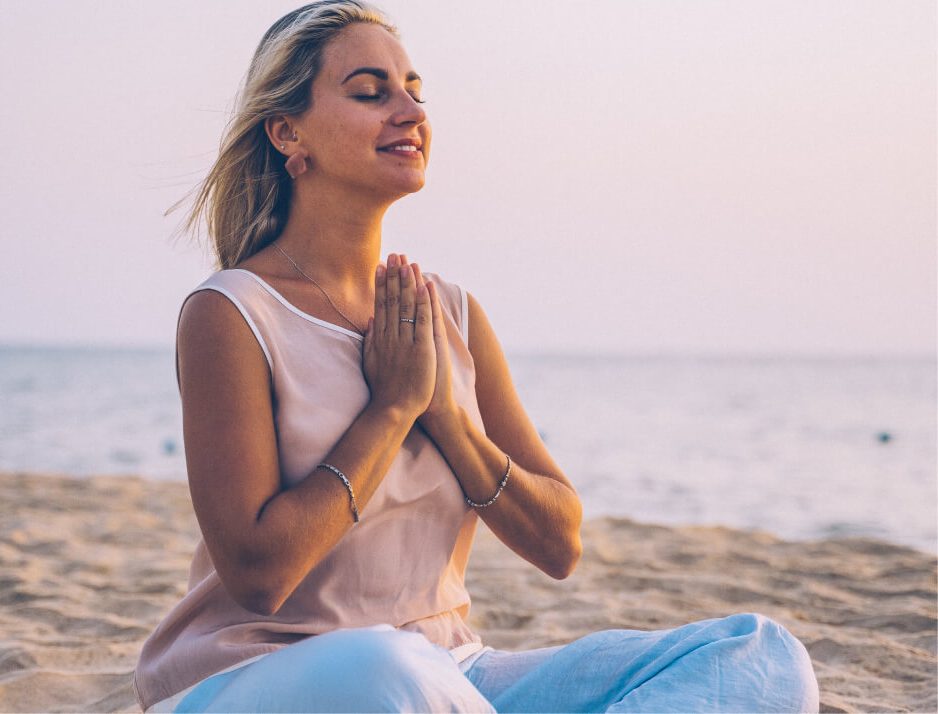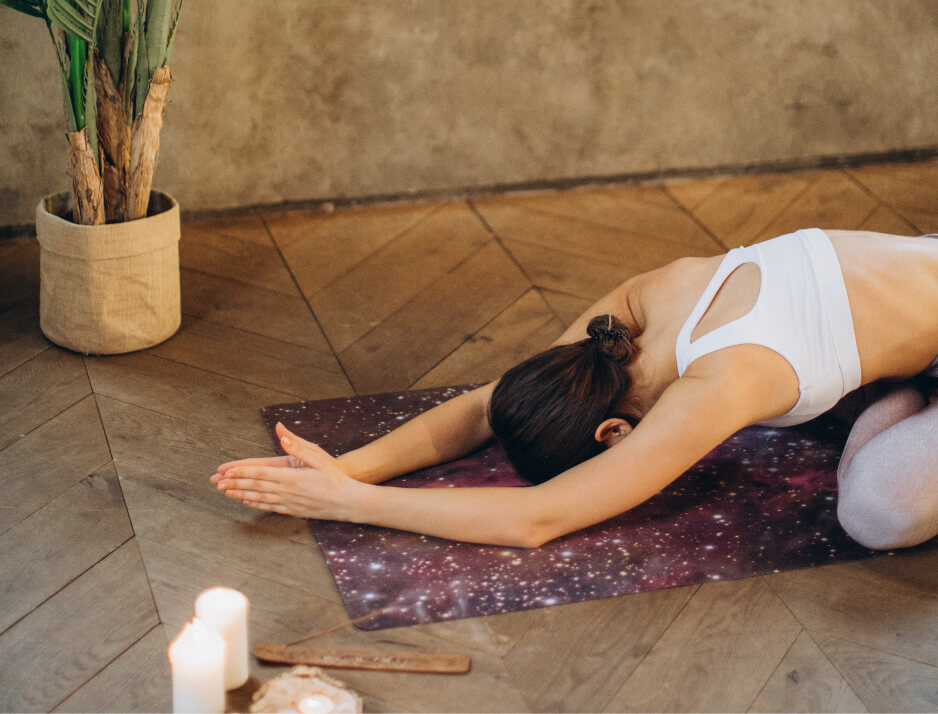The beauty of Child’s Pose lies in its simplicity and its ability to address multiple areas of the body simultaneously. It gently stretches the hips, thighs, and ankles while releasing tension in the back, shoulders, and neck. This posture encourages a sense of surrender and inward focus, making it a perfect antidote to the stresses of daily life.
Finding Your Gentle Fold
Begin by kneeling on the floor with your big toes touching. You can choose to keep your knees hip-width apart or widen them for a deeper stretch in the hips. Listen to your body and find what feels most comfortable.
Sit back on your heels. If your hips don’t comfortably rest on your heels, you can place a folded blanket between your thighs and calves for added support.
On an exhale, gently fold forward, draping your torso over your thighs. Allow your forehead to rest on the floor. If your forehead doesn’t reach the floor comfortably, you can place a block or your stacked fists underneath for support.
Extend your arms forward alongside your head, palms facing down, or rest them alongside your body with your palms facing up. Choose the arm position that feels most relaxing for your shoulders.
Allow your entire body to soften into the pose. Release any tension in your jaw, neck, and shoulders. Breathe deeply and evenly, noticing the gentle expansion and contraction of your back as you inhale and exhale.
The Profound Benefits of Gentle Release
Child’s Pose offers a wealth of physical and mental benefits, particularly for beginners who may be experiencing new sensations in their bodies. Physically, it gently stretches the hips, thighs, and ankles. It helps to lengthen and release tension in the lower back, often providing relief from mild backaches. The forward fold also gently massages the abdominal organs, which can aid in digestion. By resting your forehead on the floor, you can also calm the brain and soothe the nervous system.
Mentally and emotionally, Child’s Pose is incredibly grounding and calming. It encourages a sense of introspection and allows you to release mental clutter. It can help to reduce stress, anxiety, and fatigue, promoting a feeling of inner peace and tranquility. This pose is a wonderful way to reconnect with your breath and cultivate a sense of presence.
Variations and Modifications for Comfort
One of the great aspects of Child’s Pose is its adaptability. If you experience discomfort in your knees, you can place a rolled-up towel or blanket behind your knees. If you have tight hips, widening your knees can create more space.
For a deeper shoulder stretch, you can extend your arms forward actively. For a more passive release in the shoulders, keep your arms alongside your body. You can also gently rock your forehead from side to side on the floor to release tension in your forehead and temples.
Integrating Child’s Pose into Your Practice
Child’s Pose is a valuable pose to incorporate throughout your yoga practice. It’s a wonderful way to transition between more challenging poses, providing a moment of rest and integration. Listen to your body and come into Child’s Pose whenever you feel the need to pause, reconnect with your breath, or release tension. It’s also a beautiful pose to conclude your practice, allowing you to absorb the benefits of your efforts in a state of gentle surrender.
In conclusion, Child’s Pose is more than just a resting posture; it’s a nurturing and grounding pose that offers profound physical and mental benefits for beginners. Embrace its gentle embrace and allow it to become your sanctuary of rest and release on your yoga journey.



